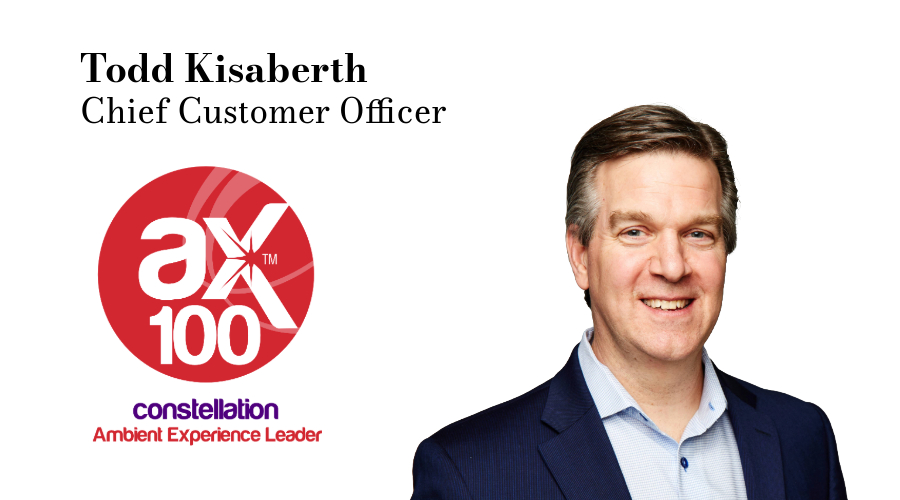5 ways finance can become more customer-centric and strengthen relationships
Customer experience is key to company success. Ever-expanding product and services choice and the economy’s shift to subscription models have changed the perception of value and loyalty. Taking action to exceed customer expectations and build relationships is now a priority for nearly every department. For finance, focusing on the customer experience is imperative across both revenue operations and customer satisfaction.
- Does your finance department have the information and insights needed?
- Are you working with outdated solutions to deal with modern challenges?
New mindsets, new needs
The finance function is no longer one that simply generates reports, budgets, and plans. The customer-centric finance department is one that works with internal stakeholders to develop strategies and processes to drive organisation-wide value and deliver innovative, efficient experiences to customers. Achieving these things requires a dramatic shift in long-established mindsets along with a new level of visibility and rich, timely data, to help you make swift business adjustments and redefine business models. It also requires a level of digital transformation that many finance departments have not yet achieved.
Whether you are a small growing company or one of the biggest 350 registered on the UK stock market, here are five key strategies to strengthen your customer relationships.
How to build a customer-centric finance team
Learn more
1. Get predictive about customer data
The cost of acquiring a new customer is typically five times greater than the cost of retaining existing ones. And a mere 5% increase in customer retention spend can increase a company’s profitability by up to 95%. It might go without saying, finance leaders should be focusing on key customer success metrics: Time-to-value, product adoption rates, project status, usage rates, and service call patterns which all help predict future rates of renewal, churn, and expansion. Additionally, know your customer’s lifetime value (CLV), corresponding customer acquisition costs (CAC), as well as the cost of the sale and cost to serve, so you can make immediate business adjustments as needed to ensure profits and not losses. This is a lot to keep track of, and fortunately there is modern technology to help.
By taking advantage of artificial intelligence (AI), you can more quickly and accurately process this customer data and make timely predictions based on patterns of customer behaviour. You will know immediately when to capitalise on product upgrades or cross-sells, which regions to focus on, or which customers need proactive outreach to prevent them from churning. You can also more easily estimate the costs involved in developing and delivering new offerings, maximising for customer satisfaction and profitability.
2. Create new revenue streams
Customer expectations are always evolving, as a result, more organisations are responding with new business models and market offerings. Consider the possibilities: Your company can introduce a completely new product or service to the market. You can also repackage an existing product or service to meet the needs of a new audience. You can even “product-ify” a service or “service-ify” a product, depending on customer needs.
Many companies have seen success by simply adjusting the manner in which their offerings are consumed. For example, one of our customers, a US-based digital agency, already had high-performing offerings; but after repeatedly receiving requests for “health checks,” they took the opportunity to go further by developing a diagnostic tool with a self-service consumption model streamlined for customers. Whether you advance offerings through acquisition, innovation, or any means described here, it’s important to recognise that you have many paths to explore.
3. Engage early in the sales cycle
A positive customer experience sets the stage for every future interaction and should start before the deal is even signed. The most critical stages to track are the handovers immediately post-sale and once the implementation process has transitioned to go live. Is the implementation going smoothly? Have they called support? Have they paid their initial bills? Are they happy with the product and process? If anything looks amiss, you can quickly suggest and implement responses to course correct. Not to mention, with increased emphasis on recurring revenue models, finance leaders should keep a very close eye on all customer behaviour, as it’s fundamental to the accuracy of revenue forecasting.
4. Harmonise billing for customer retention
Manual entry, error-prone spreadsheets, inflexibility, and lagging payments can turn customer wins into bitter losses. To avoid discrepancies or cumbersome steps that don’t make sense for your customers, ensure that you have flexible billing systems and processes that support your various revenue streams. Offer a seamless billing experience, that includes self-service options, from the time an opportunity closes all the way to billing, payment, renewal, and revenue recognition. This is accomplished by an agile, fluid billing system that transforms your billing into a streamlined, efficient, error-free process. Not only will you delight customers, but you also eliminate process gaps that are a primary cause of revenue leakage.
5. Building the Digital Office of Finance
When you start tackling new business models and getting involved in the customer journey, there are often new considerations that many legacy systems can’t address. For example, now the finance team must be able to analyse new pricing strategies and predict success or failure. You must also be able to evaluate the performance of existing offerings—and which deliver the highest margins—as well as know and monitor the lifetime value of every customer.
In addition, because subscription models are a fairly new phenomenon, traditional ERP systems do not support accounting and financial projections for usage and subscription-based pricing. And calculating deferred revenue recognition (per ASC 606 and IFRS 15) with subscription-based income can be complex.
Modern finance teams need systems that seamlessly combine the front and back-office processes. Ones that can unify data, manage any billing model, and streamline every aspect of the customer journey from the opportunity through to renewal. To build a business that supports customer-centricity and retention, you must be able to manage the entire customer lifecycle on one system and eliminate the risk of spreadsheets.
Learn more
All of this won’t happen overnight. Download this ebook, Transform to a Digital Office of Finance and learn about the mindset, technology, and structure required to be truly customer-centric. You can also attend this webinar in EMEA Delivering Seamless Revenue Operations in the Digital Office of Finance happening on the 17th of February.





